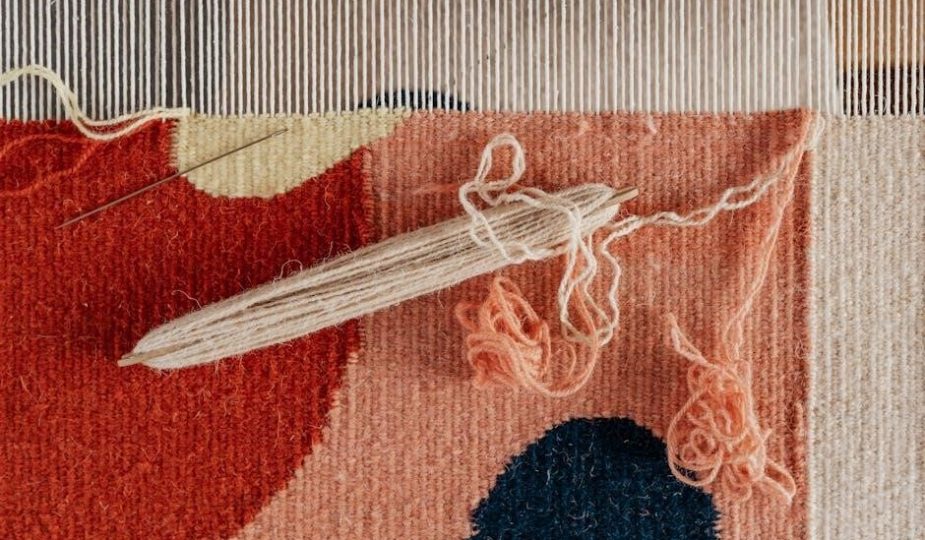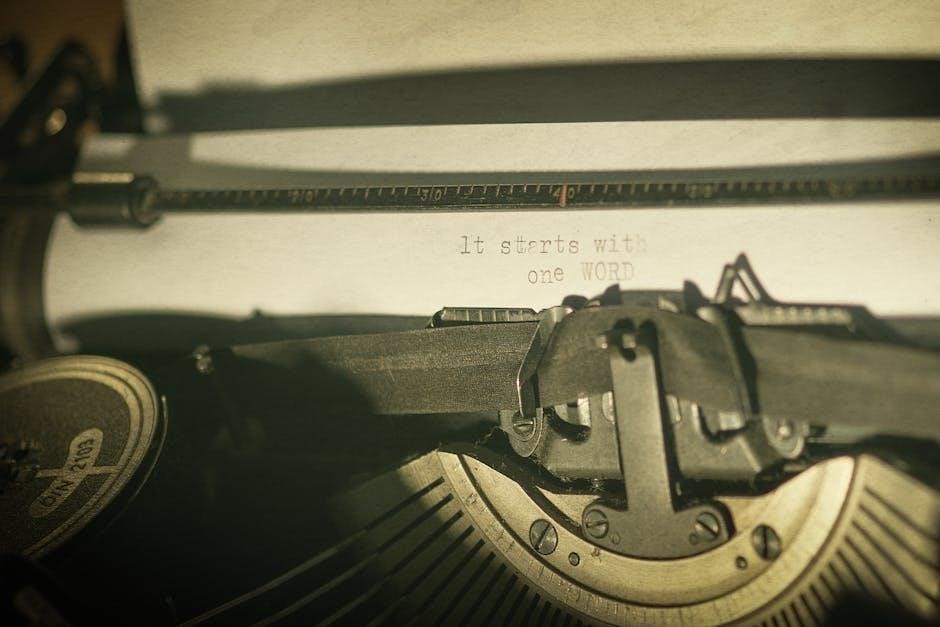
tufting manual pdf
Tufting Manual PDF: A Comprehensive Article Plan
This article provides a detailed exploration of tufting‚ focusing on readily available PDF manuals for various gun models.
It’s a comprehensive guide‚ covering setup‚ operation‚ troubleshooting‚ and resources for aspiring tufters.
Downloadable manuals – AK DUO‚ KRD I‚ and AK I – are highlighted‚ alongside links to online communities and beginner’s guides.
Tufting‚ a captivating textile art‚ has surged in popularity‚ enabling creators to craft unique rugs and wall hangings. This resurgence is fueled by accessible tools‚ notably rug tufting guns‚ and a wealth of online resources. However‚ mastering this craft requires understanding your equipment‚ and that’s where a comprehensive tufting manual becomes invaluable.
PDF manuals serve as essential companions‚ offering step-by-step instructions‚ safety guidelines‚ and troubleshooting tips. They bridge the gap between initial enthusiasm and skillful execution. Whether you’re a beginner or an experienced artisan‚ referencing the correct manual – specific to your gun model (like AK DUO‚ KRD I‚ or AK I) – ensures optimal performance and longevity of your tool. These guides unlock the full potential of your tufting experience‚ promoting both creativity and safety.
What is Tufting? A Brief Overview
Tufting is a textile manufacturing process involving inserting loops of yarn into a primary backing material. Unlike weaving or knitting‚ tufting utilizes a specialized tool – traditionally a handheld tufting gun – to rapidly create a dense pile. This technique allows for the creation of textured surfaces‚ commonly seen in rugs‚ carpets‚ and upholstery.
Modern tufting‚ particularly the DIY trend‚ employs electric tufting guns‚ offering speed and precision. Understanding the mechanics – threading‚ pile height adjustment‚ and consistent operation – is crucial. A tufting manual‚ often available as a PDF download‚ provides detailed illustrations and instructions. While some prefer manual punch needling‚ tufting guns significantly accelerate the process‚ enabling larger-scale projects and intricate designs. Mastering the basics unlocks a world of creative possibilities.
The Importance of a Tufting Manual
A tufting manual‚ especially in PDF format for easy access‚ is indispensable for both beginners and experienced tufters. These guides demystify the operation of complex tufting guns‚ detailing threading procedures‚ pile height adjustments‚ and essential safety precautions. Without proper instruction‚ users risk damaging the equipment or producing unsatisfactory results.
PDF manuals offer a convenient‚ portable resource for referencing during the tufting process. They often include troubleshooting sections addressing common issues like yarn breakage or uneven pile. Accessing a specific manual – such as those for AK DUO or KRD I guns – ensures compatibility with your equipment. Ultimately‚ a tufting manual empowers users to maximize their gun’s potential and achieve professional-quality results‚ minimizing frustration and wasted materials.

Types of Tufting Guns & Corresponding Manuals

Various tufting guns require specific PDF manuals for optimal use; key models include AK DUO‚ AKI/II‚ AK DUO HIGH‚ KRD I‚ and AK I‚ each with unique instructions.
AK DUO‚ AKI/II & AK DUO HIGH Manuals
Accessing the official PDF manuals for the AK DUO‚ AKI/II‚ and AK DUO HIGH tufting guns is crucial for safe and effective operation. These manuals detail threading procedures‚ pile height adjustments‚ and fundamental operating instructions. Tufting World provides instructions specifically for these atic-type guns‚ emphasizing a step-by-step approach for beginners.
The manuals cover essential aspects like understanding the gun’s components‚ proper yarn selection‚ and preventative maintenance to avoid malfunctions. Downloadable resources ensure users can readily reference troubleshooting tips for common issues like yarn breakage or uneven pile. Properly utilizing these guides maximizes the lifespan of your equipment and the quality of your finished rugs. Always prioritize safety by carefully reviewing all precautions outlined within the PDF before commencing any tufting project.
KRD I Tufting Gun Information
Information regarding the KRD I tufting gun is often found alongside resources for other popular models like the AK DUO. While a dedicated‚ standalone PDF manual might be less readily available than for the AK series‚ understanding its operation is vital. Tufting communities and forums frequently share insights and troubleshooting advice specific to the KRD I.
Users should seek out supplemental guides and videos demonstrating proper threading techniques and pile height adjustments for this model. General tufting manuals‚ available as PDF downloads‚ often contain sections applicable to a range of gun types‚ including the KRD I. Prioritizing safety and careful operation‚ referencing shared experiences from fellow tufters‚ will ensure successful rug creation. Remember to always inspect the gun before use and adhere to recommended maintenance practices.

AK I Tufting Gun Details
The AK I tufting gun is a widely used model‚ and its corresponding PDF manual is frequently sought after by beginners. This manual provides crucial instructions on threading the gun correctly‚ a common point of difficulty for new users. Detailed diagrams illustrate the process‚ ensuring proper yarn flow and preventing jams.
Users can find guidance on adjusting pile height settings to achieve desired rug textures. The manual also covers basic operating instructions‚ emphasizing safety precautions. Online tufting communities often share scanned copies or links to downloadable AK I manuals. Understanding the gun’s mechanics‚ as outlined in the PDF‚ is essential for consistent tufting and troubleshooting potential issues like uneven pile or yarn breakage. Regular maintenance‚ as described in the manual‚ extends the gun’s lifespan.

Setting Up Your Tufting Workspace
A dedicated space‚ essential equipment‚ and strict safety protocols are vital for successful tufting. PDF manuals often include workspace recommendations for optimal performance and safety.
Essential Equipment for Tufting
Successfully embarking on a tufting journey requires gathering specific‚ crucial equipment. Naturally‚ a tufting gun – AK DUO‚ KRD I‚ or AK I – is paramount‚ and its corresponding PDF manual is indispensable for proper operation and maintenance. Beyond the gun‚ you’ll need a sturdy tufting frame to hold the backing fabric taut.
High-quality yarn is essential‚ alongside a yarn winder to efficiently prepare it for use. Tufting cloth (primary backing) forms the foundation of your rug‚ and a shearing machine is vital for achieving a polished finish. Don’t forget safety gear: eye protection and a dust mask are non-negotiable. Many PDF manuals emphasize the importance of these safety measures. Finally‚ a carpet cutter and adhesive will be needed for finishing touches.
Creating a Dedicated Tufting Space
Establishing a dedicated tufting workspace significantly enhances efficiency and safety. Ideally‚ this space should be well-ventilated‚ as tufting generates fiber dust – a point frequently highlighted in tufting gun manuals (like those for AK DUO or KRD I). Sufficient lighting is crucial for precise work‚ minimizing errors and eye strain.
A robust frame is essential‚ securely mounted to withstand the force of the tufting gun. Consider soundproofing‚ as the gun’s operation can be loud. Ample floor space is needed to accommodate the frame and allow for comfortable movement. PDF guides often recommend keeping the area tidy‚ free from obstructions‚ and easily cleanable to manage fiber accumulation. Prioritize ergonomics to prevent fatigue during extended tufting sessions.
Safety Precautions for Tufting
Prioritizing safety is paramount when tufting; tufting gun manuals (AK DUO HIGH‚ AK I‚ and KRD I PDF versions) consistently emphasize this. Always wear safety glasses to protect against flying yarn and debris. A dust mask or respirator is crucial to prevent inhalation of fiber particles‚ a common concern detailed in online tufting communities.
Ensure the workspace is well-ventilated. Never operate the gun with wet hands or near flammable materials. Disconnect the power source when threading or making adjustments‚ as outlined in the guides. Be mindful of the gun’s moving parts and avoid loose clothing or jewelry. Familiarize yourself with the emergency stop procedure detailed in your specific gun’s PDF manual. Proper grounding is also vital for electrical safety.

Understanding Your Tufting Gun: A Step-by-Step Guide
This section details gun operation‚ referencing PDF manuals for AK DUO‚ AKI/II‚ and KRD I models.
It covers threading‚ pile height adjustment‚ and basic operation for successful tufting.
Threading the Tufting Gun
Proper threading is crucial for consistent tufting‚ and your gun’s PDF manual is the best resource. Generally‚ begin by ensuring the gun is switched off and unplugged for safety. Locate the yarn entry point‚ often a small hole or channel near the needle.
Following the manual’s diagrams‚ carefully insert the yarn‚ ensuring it passes through all necessary guides and tensioners. Incorrect threading leads to yarn breakage or uneven loops. Pay close attention to the tension adjustment; too loose results in sloppy loops‚ while too tight can strain the gun.
Refer to the specific manual (AK DUO‚ KRD I‚ or AK I) as threading procedures vary slightly between models. Practice makes perfect – don’t be discouraged if it takes a few attempts to master the technique. A correctly threaded gun is the foundation for beautiful‚ durable rugs.
Adjusting Pile Height Settings
Pile height dramatically impacts the rug’s texture and appearance; your tufting gun’s manual details precise adjustment methods. Typically‚ a dial or lever controls the scissor’s cutting length‚ determining the loop pile height. Consult the PDF for your specific model – AK DUO‚ KRD I‚ or AK I – as mechanisms differ;
Start with a lower setting for tighter piles‚ ideal for detailed designs. Higher settings create shaggier textures‚ suitable for plush rugs. Always test the setting on scrap fabric before committing to your project. Incremental adjustments are key; small changes yield noticeable results.
The manual will illustrate the correlation between dial markings and actual pile height in millimeters or inches. Consistent pile height ensures a uniform finish‚ enhancing the rug’s overall quality and aesthetic appeal.
Operating the Tufting Gun – Basic Instructions
Before operation‚ thoroughly review your tufting gun’s manual (AK DUO‚ KRD I‚ or AK I PDF) for safety guidelines and specific instructions. Ensure the gun is correctly threaded and the backing fabric is tautly secured to a frame.
Hold the gun firmly‚ maintaining a consistent speed and pressure as you move across the fabric. Avoid abrupt starts and stops to prevent uneven tufting. The manual details the optimal angle for gun operation – typically perpendicular to the fabric.
Monitor yarn feed and tension; adjustments may be needed during operation. Regularly check for any malfunctions and immediately cease operation if issues arise. Refer to the troubleshooting section of your PDF manual for guidance.

The Tufting Process: A Detailed Guide
This section details the tufting steps: preparing fabric‚ initial techniques‚ and maintaining consistency. PDF manuals offer visual aids and specific guidance for optimal results.
Step 1: Preparing the Backing Fabric
Before beginning the tufting process‚ proper backing fabric preparation is crucial for a successful outcome. PDF manuals consistently emphasize stretching the fabric tautly onto a frame; this prevents uneven pile height and ensures consistent yarn penetration. The fabric should be securely fastened‚ avoiding any slack or wrinkles.
Different manuals may recommend specific fabric types – primary tufting cloth is standard – and stretching techniques. Some suggest using frame pins or staples‚ while others advocate for specialized stretching tools. Refer to your gun’s PDF manual for recommended fabric tension. Incorrect tension can lead to skipped stitches or damage to the tufting gun. Ensuring a smooth‚ drum-tight surface is the foundation for quality tufting.
Step 2: Initial Tufting Techniques
Initial tufting requires a gentle approach‚ as detailed in many PDF manuals. Begin by holding the tufting gun perpendicular to the stretched backing fabric. Slowly move the gun forward‚ allowing the needles to penetrate and create loops. PDF guides stress the importance of maintaining a consistent speed; too fast can cause skipped stitches‚ while too slow may result in dense‚ uneven areas.
Practice straight lines before attempting curves or complex designs. Manuals often recommend starting with small sections to get a feel for the gun’s power and responsiveness. Pay attention to the sound of the gun – a smooth‚ consistent hum indicates proper operation. Refer to your specific gun’s PDF for recommended yarn types and settings for optimal initial results;
Step 3: Maintaining Consistent Tufting
Consistent tufting‚ as emphasized in numerous PDF manuals‚ hinges on maintaining a steady hand and consistent pressure. Avoid jerky movements; smooth‚ fluid motions yield the most uniform results. Regularly check the backing fabric’s tension – slackness leads to uneven pile height. PDF guides often illustrate proper body positioning to minimize fatigue and maximize control.
Periodically lift the gun slightly to observe the stitch density and make adjustments as needed. Manuals highlight the importance of consistent yarn feed; ensure the yarn is flowing smoothly to prevent breaks or inconsistencies. Refer to your gun’s PDF for specific recommendations on speed and pressure settings to achieve a professional‚ even finish throughout your project.

Troubleshooting Common Tufting Issues
PDF manuals offer solutions for yarn breakage‚ uneven pile‚ and gun malfunctions. Guides detail fixes‚ emphasizing consistent tension and proper threading for optimal performance.
Addressing Yarn Breakage
Yarn breakage during tufting is a frequent issue‚ often detailed within tufting gun manuals available as PDF downloads. These guides typically pinpoint several key causes. First‚ incorrect yarn tension is a primary culprit; too much or too little tension can lead to snapping. Manuals emphasize adjusting the tensioner to match the yarn weight and type.
Secondly‚ the quality of the yarn itself plays a role. Weak or damaged yarn is prone to breaking. PDF resources suggest using high-quality‚ consistent yarn. Finally‚ the backing fabric’s condition and the gun’s settings can contribute. A rough fabric or incorrect pile height settings can increase friction and cause breakage. Tufting manuals provide step-by-step instructions for optimizing these parameters‚ ensuring a smoother‚ more reliable tufting process.
Fixing Uneven Pile Height
Uneven pile height is a common challenge addressed in tufting gun manuals‚ often available as downloadable PDF documents. These guides typically identify inconsistent pressure as a major factor. Maintaining a steady hand and consistent speed while operating the gun is crucial. PDF resources emphasize proper body positioning and grip for optimal control.
Another cause is improper adjustment of the pile height setting on the gun itself. Manuals provide detailed instructions on how to accurately set and adjust this feature. Furthermore‚ variations in the backing fabric’s weave or thickness can contribute to inconsistencies. Tufting manuals recommend using a uniform backing material. Regularly checking and cleaning the gun’s components‚ as outlined in the PDF‚ also helps ensure consistent performance and a uniform pile.
Resolving Gun Malfunctions

Tufting gun manuals‚ often found as PDF downloads‚ are invaluable when addressing malfunctions. Common issues‚ like the gun failing to fire‚ are frequently linked to threading problems. PDF guides offer step-by-step illustrations for correct yarn insertion. Another frequent problem is a jammed mechanism; manuals detail safe disassembly and cleaning procedures.
PDF resources emphasize the importance of disconnecting the power source before any maintenance. They also highlight potential causes like worn-out parts‚ advising users to consult the manual for replacement procedures. If the gun operates erratically‚ the manual may suggest checking the air compressor (for pneumatic guns) or electrical connections. Always refer to the specific PDF manual for your gun model‚ as procedures vary significantly.

Resources for Further Learning
Explore online tufting communities‚ forums‚ and readily available PDF beginner’s guides to expand your knowledge. Discover mechanical versus manual techniques!
Online Tufting Communities & Forums
Engaging with online tufting communities and forums is invaluable for both beginners and experienced rug makers. These platforms offer a space to share knowledge‚ troubleshoot issues‚ and gain inspiration from fellow enthusiasts. Many forums host dedicated threads for specific tufting gun models‚ allowing users to exchange tips on manual interpretation and operation.
Active communities often share PDF versions of tufting gun manuals‚ supplementing official documentation. Members frequently post detailed tutorials‚ addressing common problems like yarn breakage or uneven pile height. Furthermore‚ these spaces provide a supportive environment to ask questions and receive personalized guidance.
Searching for groups on platforms like Facebook‚ Reddit (r/tufting)‚ and dedicated tufting websites will connect you with a wealth of information and a passionate community eager to help you succeed in your tufting journey.
Beginner’s Guides to Rug Tufting (PDF Downloads)
Numerous beginner’s guides to rug tufting are available as PDF downloads‚ offering a structured learning path for newcomers. These resources often cover essential topics like selecting the right tufting gun‚ preparing backing fabric‚ and mastering basic tufting techniques. Many guides include detailed illustrations and step-by-step instructions‚ simplifying the learning process.
Specifically‚ resources like “Beginner’s Guide to Rug Tufting” (available through various ebook platforms) provide comprehensive overviews‚ often referencing specific manuals for popular gun models. These PDFs frequently address safety precautions and troubleshooting common issues‚ such as yarn breakage and pile height inconsistencies.
Downloading and studying these guides alongside your tufting gun’s manual will accelerate your learning curve and ensure a successful start to your rug-making adventure. They are invaluable supplements to practical experience.
Mechanical vs; Manual Tufting Techniques
The core difference between mechanical and manual tufting lies in the power source and automation. Manual tufting‚ traditionally involving hand-held tools like punch needles‚ offers greater control but is significantly slower and more labor-intensive. Mechanical tufting‚ utilizing powered tufting guns – detailed in accompanying PDF manuals – dramatically increases speed and efficiency.
Mechanical guns‚ often employing pneumatic cylinder or adjustable settings (as opposed to primitive methods)‚ allow for consistent pile height and faster coverage. While manual methods suit smaller projects or artistic detailing‚ mechanical tufting excels in producing larger rugs efficiently. Understanding these distinctions‚ and referencing the appropriate PDF guides for your chosen method‚ is crucial.
Ultimately‚ the choice depends on project scale‚ desired speed‚ and personal preference‚ but mechanical tufting dominates commercial production.


